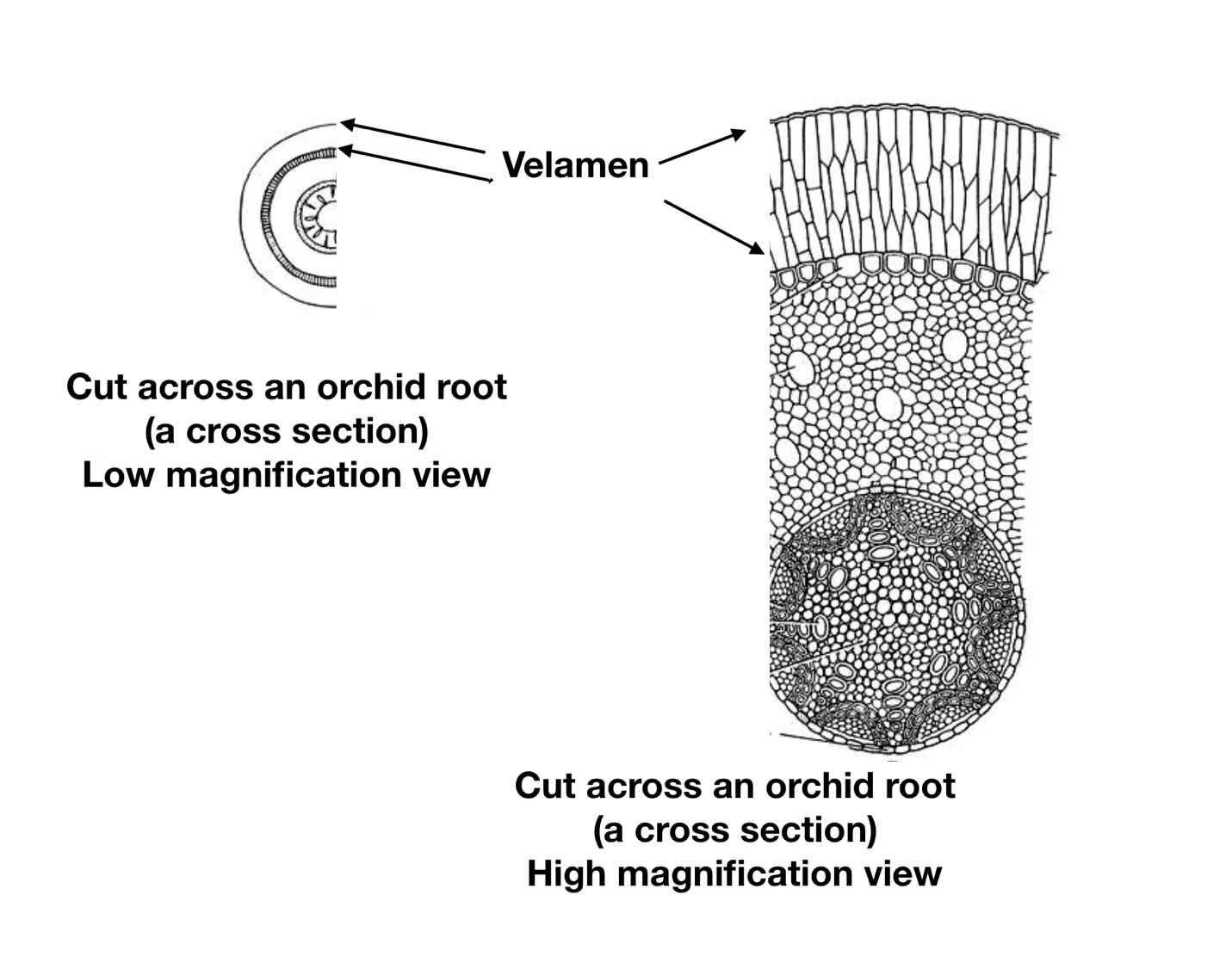
Dr. Lew Feldman, Garden Director
Epiphytes are plants that grow on other plants and thus their roots are not connected to the soil, but rather are often in direct contact with the atmosphere. Consequently, the only opportunity these roots (aerial roots) have to obtain most of their moisture is when it rains, which, in the tropics occurs as intense, short downpours. This means that epiphyte roots have only a very limited window of time during which to absorb water; this is usually too short of a time for the living tissue to absorb sufficient moisture. Thus, epiphyte roots have developed a unique and ingenious mechanism for rainwater capture.
Many of you have seen this mechanism in operation. For those of you who grow orchids indoors, you will likely recall what an aerial root looks like; green at the tip and grayish behind, as shown in the picture above.
The grayish tissue, technically known as the velamen, is the starting point for understanding the mechanism of water absorption in aerial roots. The velamen consists of dead cells, usually several layers thick, covering the outer surfaces of aerial roots, as shown in the diagrams drawn below (microscopic views).

When a downpour occurs, water rapidly moves into the dead velamen cells via capillary action, which is the ability of liquids to flow in narrow spaces without any input of energy, similar to what happens when a piece of paper is put into water. Thus, following a brief rain, velamen cells swell quickly, as water continues to move into them via capillary action. With time, and long after the rain has ended, water is gradually moved out of the velamen cells and redistributed to all parts of the plant. For those of you who mist your orchids, you’ll notice that the velamen changes color following misting; this indicates that water has moved, via capillary action, into the dead velamen cells. So even though the rain has ended, large amounts of water have been stored in the velamen cells, which can be thought of as the roots’ own soil. With time, the water absorbed from the velamen by the living root tissue is moved to other portions of the plant, resulting in the velamen’s color changing back to its original gray hue.
